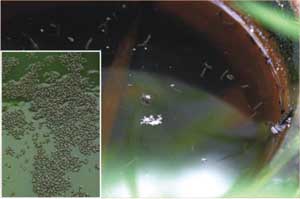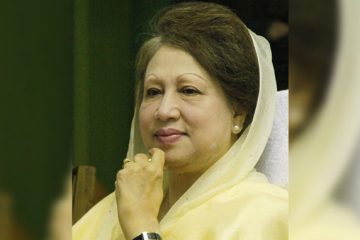Strikes early this year; number of infection shows sharp rise as anti-mosquito drive hardly carried out; DCC complains of poor logistics
 The dreaded dengue fever is back. The number of dengue-affected people in the capital took a sharp rise with 82 new cases reported from July 23 to 28.
The dreaded dengue fever is back. The number of dengue-affected people in the capital took a sharp rise with 82 new cases reported from July 23 to 28.
According to the control room of Directorate General of Health Services (DGHS), 188 people contracted dengue fever in the capital this month, whereas the number was just 35 in July last year.
The statistics however, only gives a partial picture of the spread of this communicable disease. The figures of the affected are collected from only 25 private hospitals and clinics out of 592 private and 10 public hospitals in the capital. This leaves one to expect a much graver situation in the city as a whole.
Meanwhile, according to Dhaka City Corporation (DCC) a total of 202 people were infected with dengue fever in June and July this year while the DGHS puts the number at 249.
“Last year, there were no filed cases of dengue fever in June but 61 cases had been reported in June this year,” said Prof Mahmudur Rahman, director of Institute of Epidemiology, Disease Control and Research (IEDCR).
Experts say that timely management, including obliteration of breeding grounds for Aedes mosquitoes, is crucial. But DCC, the authority responsible for keeping the environment clean and destroying mosquito breeding grounds, has done nothing significant yet in this regard. As always, the reasons remain the same lack of proper monitoring and inadequate manpower and logistics.
About 20 percent of the equipment used by the DCC remains out of order all year round and this immensely hampers its anti-mosquito drives, said officials of the city corporation.
On Thursday, the DCC faced the music of its advisory committee on waste management and mosquito for its inadequate drives.
Contacted, Brig Gen Nasir Uddin, DCC’s chief health officer, said that DCC has only 660 people to carryout drives whereas it needs at least 7,000 employees for the huge task. However, as per routine, the DCC has been spraying pesticide in different localities of the city.
“In the mean time, families and communities should come forward to eliminate mosquito habitats. Every one should be alert so that water does not accumulate in flower vases, tubes, tyres, coconut shells etc. inside or outside the house,” he said.
A total of 119 dengue patients were admitted to Holy Family Red Crescent Hospital from June 14 to July 28. Most of them came from the city’s Moghbazar, Mohammadpur, Dhanmondi, Rampura, Jatrabari, Khilgaon and Bashabo areas.
Senior medical officer of the hospital Tayeba Zohora said patients are coming with either Dengue Classical (in which case people suffer from high fever, headache, spinal ache or retro orbital pain) or Dengue Haemorrhagic (in which case people experience gum bleeding, rashes etc). However, this year they have not yet got any case of shock syndrome in which a patient’s blood pressure drastically falls and takes a severe turn.
The severity of dengue has reduced significantly over the last decade as management and diagnosis systems have improved. In 2000, a dengue outbreak killed 93 people. But in the last four years, death in dengue fever has been contained to a great extent, showed a DGHS record.
A total of 5,541 cases of dengue infection were recorded in 2000, which reduced to 474 in 2009 and 409 in 2010.
At the moment, DCC is only providing 9 percent of the manpower required for the drives.
“Unless it hires additional manpower and provides them with the necessary equipment, we may be on the verge of another dengue outbreak like the one we faced in the year 2000,” said Sadeque Rahman Saeed, a resident of Lalmatia who saw no DCC men fogging in his area.
Courtesy of The Daily Star




















